The .30-30 Winchester is still one of America’s favorite deer cartridges.
When they close their eyes and try to imagine a deer rifle that best represents classic Americana, many hunters likely picture a lever-action chambered in .30-30 Winchester. That shouldn’t be surprising because after all, the .30-30 Winchester has been around for well over a century and has arguably taken more deer in United States than any other cartridge.
The question remains though: why is the .30-30 Winchester still so popular? It’s an old design originally intended for a hunting market that has drastically changed since the 1890s. Perhaps even more significantly, the .30-30 can’t come anywhere close to the performance of newer cartridges like the 7mm Remington Magnum, .300 Winchester Magnum, or even the .30-06 Springfield on paper.
Even so, demand for the .30-30 Winchester is still high in the United States and it consistently ranks among the best selling cartridges with the big ammunition companies.
In today’s post, I’m going to discuss why the .30-30 Winchester remains so popular after all of these years despite its advanced age.
Note: some of the links below are affiliate links. This means I will earn a small commission (at no extra cost to you) if you make a purchase. This helps support the blog and allows me to continue to create free content that’s useful to hunters like yourself. Thanks for your support.
Additionally, I recorded an entire podcast episode on this exact subject. If you’d rather listen than read, click the appropriate link below to listen to this episode on your preferred podcasting service.
30-30 Winchester Podcast
Apple | Google | iHeart | Spotify | Stitcher
.30-30 Winchester History
First introduced by Winchester Repeating Arms in 1895 for their Model 1894 rifle, the .30-30 Winchester made history as the first sporting cartridge loaded exclusively with smokeless powder. Winchester originally named the cartridge the “.30 Winchester Smokeless” and it carried a “.30 WCF” (short for .30 Winchester Center Fire) headstamp.
However, the management at rival gun manufacturer Marlin knew a good thing when they saw it and adopted the cartridge for use in their Model 1893 rifle several months later. Not wanting to give their competitor free advertising, Marlin worked with the Union Metallic Cartridge Company (UMC) to produce identical ammunition with the designation .30-30 Smokeless, or just .30-30 for short.
UMC derived those names by using the black powder naming convention in common use at the time that consisted of the caliber of the cartridge followed by the standard load of powder in grains (like the .45-70 Government for instance). Since the new Winchester cartridge used a .30 caliber bullet (.308″ diameter) propelled by 30 grains of smokeless powder, the cartridge received the designation “.30-30.”
Despite their best efforts, the name .30-30 Winchester eventually stuck and the cartridge now carries a “.30-30 Win” headstamp.
The original .30-30 Winchester load consisted of a 160 grain bullet propelled at 1,970 feet per second (1,379 ft-lbs of energy). This was a significant step up in performance compared to the two black powder cartridges available in the Winchester Model 94 at the time: the .32-40 Winchester (165gr bullet at approximately 1,450fps for 770ft-lbs of energy) and the .38-55 Winchester (255gr bullet at approximately 1,320fps for 987ft-lbs of energy).
During those days, lever action rifles still ruled supreme with hunters in the United States. So, by introducing a new cartridge that was both dramatically more powerful than the competition and available in a dependable, lightweight, easy to handle, and reasonably priced rifle in the Model 1894, Winchester created the perfect conditions for a major commercial success with the .30-30 Winchester.
Not surprisingly, hunters all over North America, quickly started snapping up the new rifles and cartridges. Over the years, it’s gained a reputation as a wonderful cartridge for hunting deer, black bear, and feral hogs at short to moderate range. It’s quite possible that hunters have taken more deer with Model 1894 rifles chambered in .30-30 Winchester than any other rifle/cartridge combination.
Indeed, the fact that competitors have specifically marketed their cartridges as better alternatives to the .30-30 (like Remington did with the .35 Remington) and that the .30-30 case has spawned so many wildcat and factory derivative cartridges (like the .219 Zipper and the 7-30 Waters) are both testaments to the popularity and longevity of the cartridge.
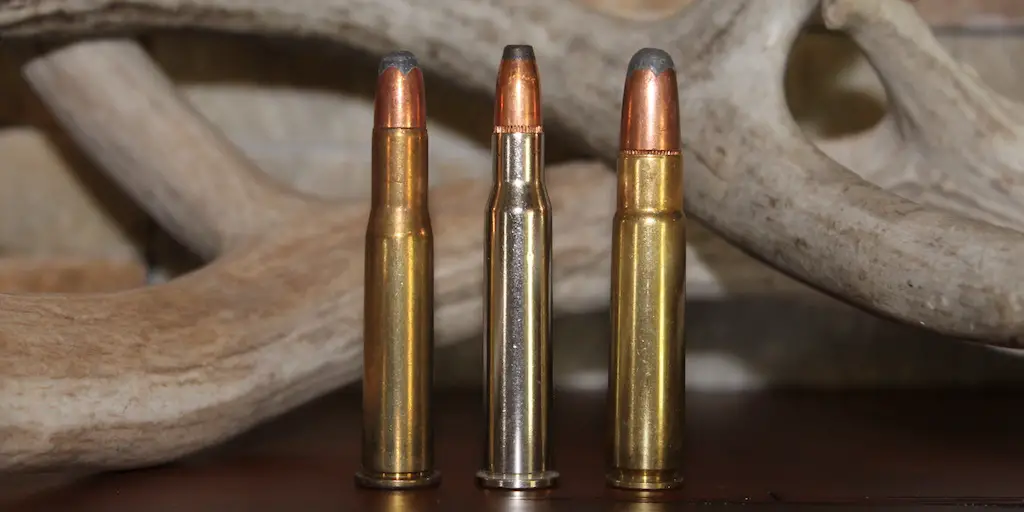
.30-30 Winchester Ammo
Even though the .30-30 is well over a century old, it’s still extremely popular in the United States and ranks up there with rifle cartridges like the .223 Remington, .308 Winchester, 7.62×39, .270 Winchester, and .30-06 Springfield in yearly ammunition sales. As a result, just about every ammunition manufacturer produces .30-30 ammo. For instance, Barnes, Browning, Buffalo Bore, Federal Premium, Fiocchi, Hornady, Nosler, Prvi Partizan, Remington, Sellier & Bellot, and Winchester all manufacture at least one .30-30 Winchester load.
In the years following Winchester’s release of the .30-30, the major ammunition companies introduced 150 grain and 170 grain loads for the cartridge. These are now the most popular bullets weights for .30-30 ammo. Due to the advent of better quality smokeless powder, modern loads reach around 2,400 feet per second with 150 grain bullets and 2,200 feet per second with 170 grain bullets.
BUY SOME EXCELLENT 30-30 HUNTING AMMO HERE
BUY SOME MORE GREAT 30-30 HUNTING AMMO HERE
Since the Model 1894 rifle has a tube magazine, bullets in the magazine are stacked tip to primer. For that reason, most .30-30 ammunition uses round or flat nosed bullets to prevent recoil from causing the tip of one cartridge from detonating the primer of a cartridge stacked on top of it. While using flat or round nose bullets does eliminate that potential safety risk, those stubby bullets aren’t very aerodynamic and downrange performance suffers.
Fortunately, there are a couple of options to help alleviate that problem to a certain degree.
First, .30-30 Winchester ammo is available as part of the Hornady LEVERevolution line. These bullets have a flexible polymer tip that increase the ballistic coefficient of the bullet, but are safe to use in a tubular magazine. Loaded with either 140gr MonoFlex or 160gr FTX bullets, the .30-30 Winchester LEVERevolution ammunition offers a significant ballistic improvement over .30-30 ammo loaded with traditional flat or round nosed bullets.
Winchester’s Deer Season XP line of ammunition also features a polymer tip to help improve ballistic performance and it’s a GREAT deer hunting load.
Buffalo Bore also produces a line of “heavy” .30-30 Winchester ammo designed for optimum performance on really big game like brown bears or moose. With a 190 grain bullet pushed at around 2,100 feet per second (1,860 ft-lbs of energy), this is one of the hottest .30-30 loads currently available.
Firearms In .30-30 Winchester
No matter how good a cartridge may be on paper, availability (or lack thereof) of the cartridge in quality firearms has a lot to do with whether or not the cartridge makes it into the mainstream. Fortunately for the .30-30, Winchester Repeating Arms originally introduced the cartridge in the excellent Model 1894 lever action rifle. Undoubtedly, pairing the new cartridge with one of America’s most popular lever action rifles helped spur acceptance of the .30-30 Winchester by hunters and shooters.
Since it’s a rimmed cartridge, .30-30 Winchester is most commonly chambered in lever action and single shot firearms as well as a few handguns like the Thompson Center Contender.
In addition to the Winchester Model 1894, the Marlin Model 336 and the Savage Model 99 are both extremely popular lever action rifles available in .30-30. Henry has produced several lever action models in .30-30 (like the Henry All-Weather) as has Mossberg with the Mossberg 464, 472, and 479. Thompson Center has also produced their break action single shot Contender rifle and pistol in the cartridge for many years. Ruger also produces the Ruger No. 1 single shot in .30-30 as well.
Though it was never really a popular cartridge for bolt action rifles, Winchester produced the Model 54 in .30-30 for a time. So did Remington and Savage (and a few others) with the Remington 788 and the Savage Model 340 respectively.
BUY A GREAT 30-30 HUNTING RIFLE HERE
Hunting With The .30-30 Winchester
In short, the .30-30 Winchester caught on because it was powerful enough to get the job done when hunting whitetail deer and black bear at short to moderate range, but still had relatively mild recoil in a lightweight and easy to carry rifle. Since most hunters east of the Mississippi very rarely take shots on deer past 150 yards, they loved the hard hitting .30-30 and didn’t really need a cartridge with a flatter trajectory for most applications. Those characteristics also made it a really good deer hunting cartridge, especially for small framed and/or inexperienced hunters.
The .30-30 Winchester remains a favorite in many parts of the United States for those same reasons. Additionally, advances in powder and bullet technology have improved certain aspects of the cartridge and made it an even better hunting cartridge in many respects.
For instance, hunters in the United States and Canada have used the .30-30 Winchester to harvest untold numbers of elk, grizzly bear, and moose over the years. Though many say it’s a borderline choice for the job (and not without reason), it will certainly work in that role with good shot placement. Additionally, the advent of much better quality controlled expansion (particularly bonded or monolithic) bullets have undoubtedly made the .30-30 Winchester more effective on really large game than it used to be.
At the same time, hunters who want to wring every last bit of performance out of the .30-30 Winchester can do so with some of the polymer tipped bullets currently available on the market.
As you can see in the table below comparing Winchester’s Super-X 150gr JHP in .30-30, Hornady’s 160gr FTX LEVERevolution in .30-30, and Nosler’s Trophy Grade 150gr Partition load in .30-06 Springfield, the Hornady load has a noticeably flatter trajectory and has over 50% more energy at 300 yards than the traditional 150gr .30-30 load. That being said, it’s still not a long range load by any stretch of the imagination and falls well short of the .30-06.
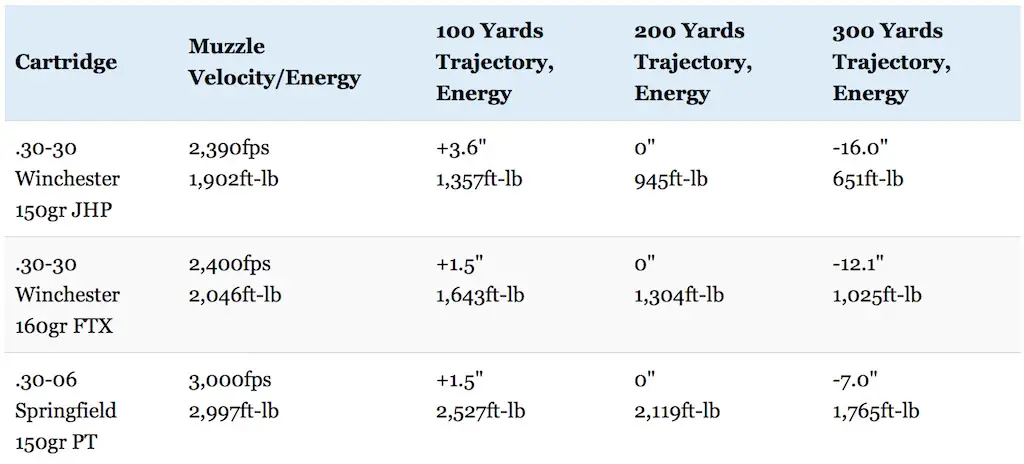
Yes, many of the more modern cartridges like the .308 Winchester and .30-06 Springfield are clearly more powerful than the .30-30 Winchester. However, the body of evidence also indicates that all of those cartridges (including the .30-30) are tremendously effective on most species of big game. Truth be told, the biggest advantage those newer cartridges have over the .30-30 is that they have a higher velocity, flatter trajectory, and a longer effective range.
If you’d like to read a more detailed discussion on the .30-06 Springfield and some of the other popular .30 caliber cartridges, read the articles below:
308 vs 30-06 vs 300 Win Mag: Which Cartridge Should You Be Hunting With?
.300 Blackout vs 7.62×39: Everything You Need To Know
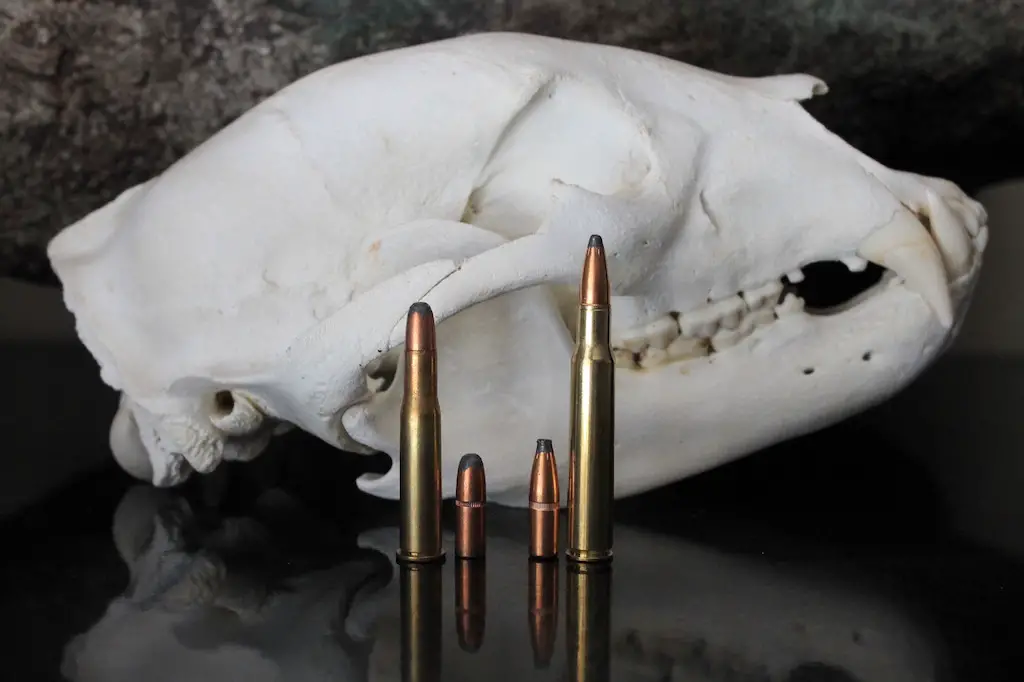
Realistically, hunters armed with a .30-30 have a maximum effective range of around 150-200 yards. When using a polymer tipped bullet and a scoped rifle (like a Marlin 336), it’s possible to extend that somewhat to around 250 yards or so. That’s plenty of range for most hunters though.
On the other hand, the .30-30 Winchester is not really suited for hunting situations that might require longer range shooting, such as a mule deer hunt in Arizona, an elk hunt in Colorado, or a pronghorn hunt in Wyoming.
Instead, the .30-30 Winchester thrives in the thick hunting conditions most commonly found in eastern states.
While it does have a reputation as good cartridge for a brush gun, the .30-30 isn’t particularly great at shooting through cover. Contrary to what many believe, those round nosed bullets will still deflect after hitting leaves or tree limbs. However, the cartridge is known for great performance in thick brush primarily because it has a mild recoil and is primarily available in quick handling and lightweight rifles ideally suited for fast shots on game at close range.
Best .30-30 Winchester Ammo For Hunting
All of the big ammunition companies make several different loads .30-30 ammo specifically designed for hunting deer and other North American big game. Visit the link below for couple of recommendations for some of the best .30-30 Winchester hunting ammo currently available on the market.
Best .30-30 Ammo For Hunting Deer & Other Big Game
IN-STOCK 30-30 WINCHESTER AMMO
Before we wrap up, I wanted to touch on how the .30-30 Winchester stacks up against the .45-70 Government. Those are the two most popular cartridges among hunters who use lever-action rifles in North America.
I’ve actually written a very detailed and comprehensive article on how those two fantastic lever action cartridges compare to each other. Click the link below to learn all about the pros and cons of the .30-30 Winchester vs the .45-70 Government.
30-30 vs 45-70: Which Lever Action Is Best For You
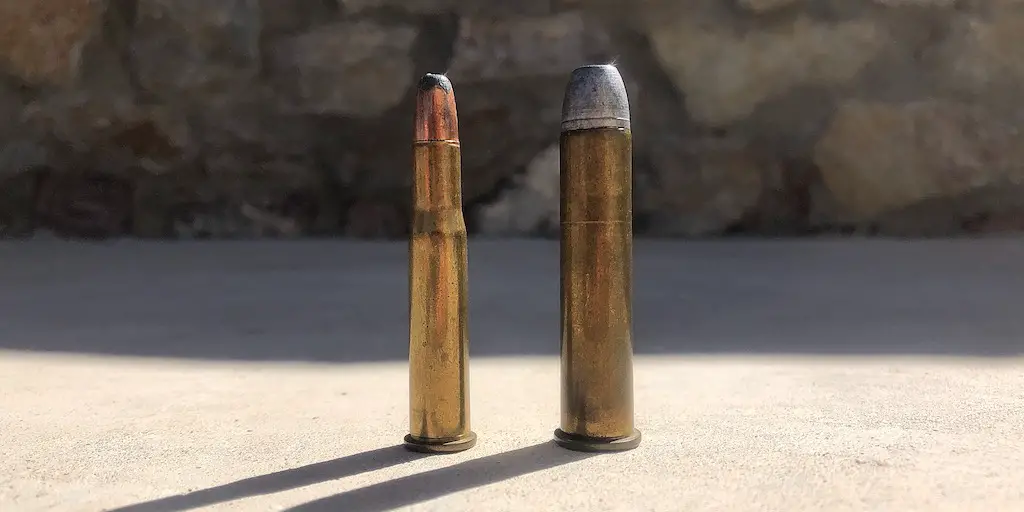
Final Thoughts On The .30-30 Winchester
Don’t be fooled by the deceptively anemic performance of the .30-30 Winchester on paper. While it does indeed have its limitations, the .30-30 is an outstanding choice for hunting under the right circumstances. After all, there is a reason why so many hunters still continue to use the .30-30 Winchester: because it just works extremely well for the vast majority of hunting situations in the United States.
Are you curious about how the 30-30 Winchester stacks up against other popular (and not so popular) 30 caliber cartridges? If so, you’ll probably enjoy my podcast episode on 30 caliber cartridges. In this episode, I talk about the history, pros, cons, and recommended uses for basically everything from the 30 Carbine all the way up to the 30-378 Weatherby Magnum and 300 PRC as well as everything in between (to include the 30-30).
This is a fantastic episode, so just click the appropriate link below to listen to that episode on your preferred podcast app. Be sure to hit that “Subscribe” or “Follow” button in your podcast app to receive future episodes automatically (for free)!
Ultimate Guide To 30 Caliber Cartridges Podcast
Apple | Google | iHeart | Pandora | Spotify
LeverGuns.com along with the Lyman 50th Edition (p234-236) and Hornady 10th Edition (p444-447) reloading manuals were also used as references for this article.
Enjoy this article on the .30-30 Winchester? Please share it with your friends on Facebook and Twitter.
Make sure you subscribe to The Big Game Hunting Podcast and follow The Big Game Hunting Blog on Facebook, Instagram, Twitter, and YouTube
NEXT: BEST 6.5 CREEDMOOR AMMO FOR HUNTING ELK, DEER, & OTHER BIG GAME
NEXT: .450 MARLIN: EVERYTHING YOU NEED TO KNOW
John McAdams is a proficient blogger, experienced shooter, and long time hunter who has pursued big game in 8 different countries on 3 separate continents. John graduated from the United States Military Academy at West Point and is a veteran of combat tours with the US Army in Iraq & Afghanistan. In addition to founding and writing for The Big Game Hunting Blog, John has written for outdoor publications like Bear Hunting Magazine, The Texas State Rifle Association newsletter, Texas Wildlife Magazine, & Wide Open Spaces. Learn more about John here, read some of John’s most popular articles, and be sure to subscribe to his show: the Big Game Hunting Podcast.

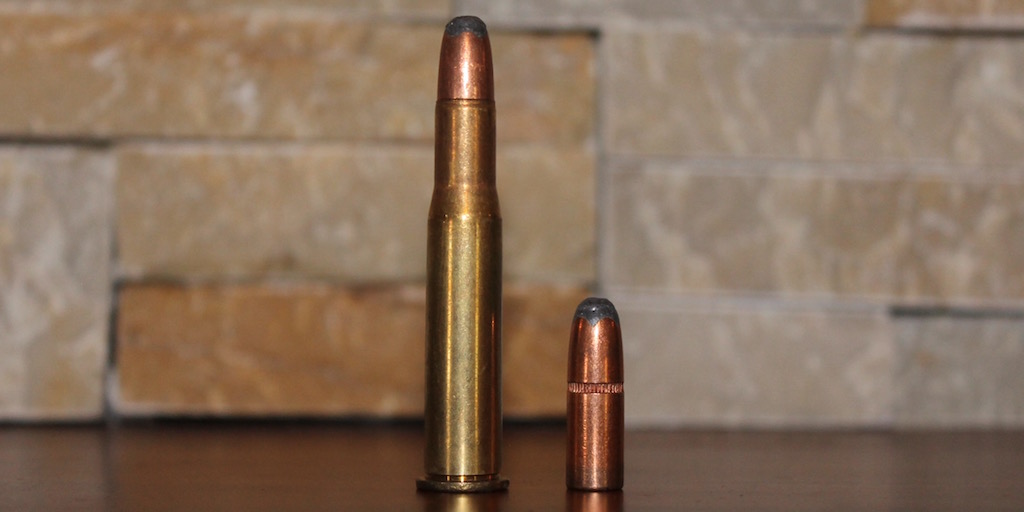

Shot my first deer a nice 3 point on a dead run with a model 99 savage iron sights 1 shot went down like a ton of bricks.
I love my Marlin 30-30. Plenty of power for all the hunting I do.
I like that it’s safe. Fire a round and you have to load another to be hot again. This can be done quickly enough.
I can sit with a round in the chamber and still feel safe as I need to pull the hammer back to fire it.
A safety is tough to use when you have gloves on and you shoot left handed, so this works great for me.
I’d love to find a .22 in lever action. Be great plinking as you can open the action and set it down safely. Fire a round and it’s safe until another is loaded manually.
I’ve got the Marlin 336, manufacture date 1952. The same year I was born. It goes Boom! Something falls over dead. The 30-30 still roars as does its owner.
You’re right! Born in 1954 myself.
Don’t waste slot of cartridges either.
30-30 lever guns are so cool !😎